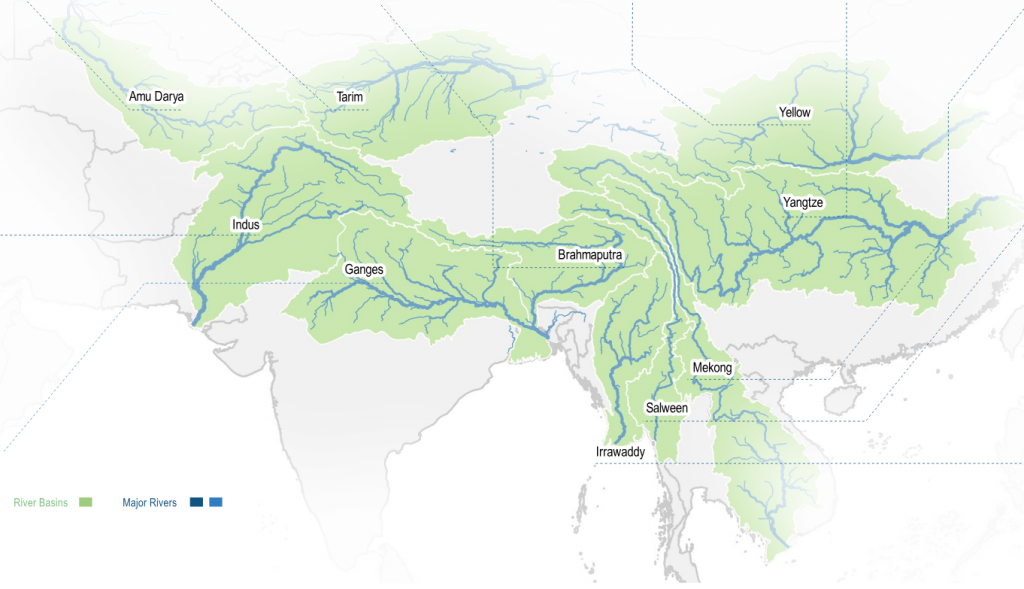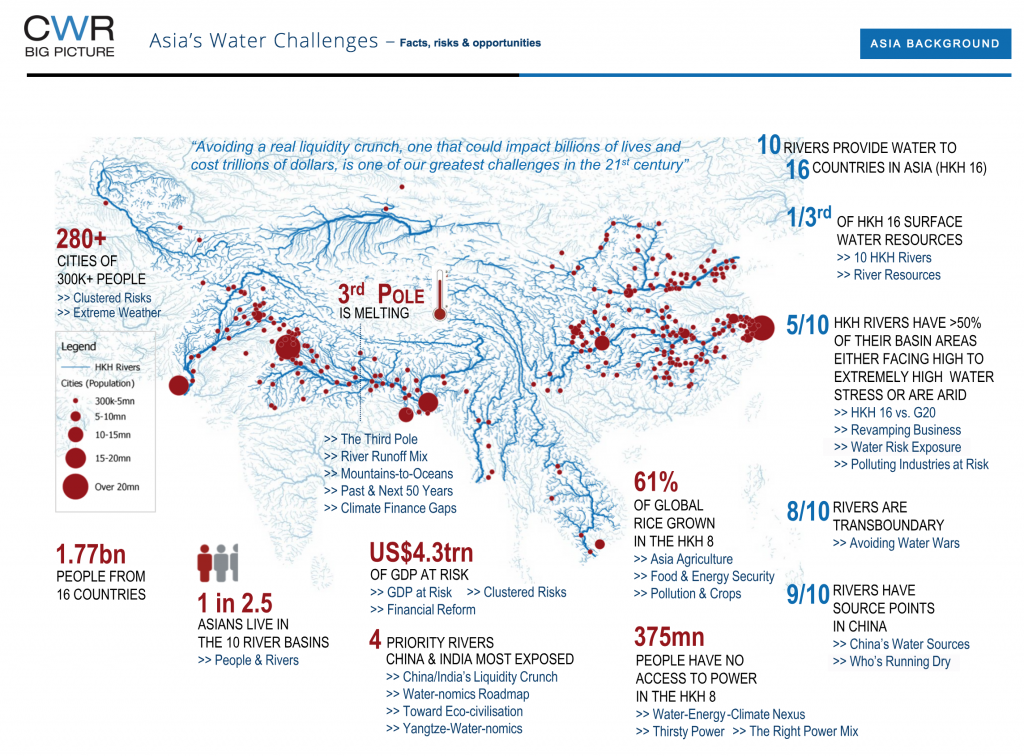The 3rd Pole is Melting – the Other Water Problem
In my blog I often write about the north and south polar regions because the melting ice sheets and glaciers on Greenland and Antarctica contain about 98% of potential sea level rise. The snow covered mountains of Central Asia, the Hindu Kush Himalayas, including Mt. Everest, are sometimes referred to as the “Third Pole” due to their massive year-round snow and ice. In spite of a few similarities with the melting glaciers of the Arctic and Antarctica, the third pole represents a very different threat to that region, and to global stability.
A superb new report by the nonprofit group, China Water Risk makes a very clear case that we all need to understand how climate change poses a huge and profound risk that connects glaciers and fresh water supply. The meltdown is related to the coastal risk of rising seas, but is quite different. Both challenges start with the same cause, a planet that is already one degree Celsius (1.8 Fahrenheit) warmer over the last century, and now headed to double or triple that level.
The effects of melting ice cover, to levels below anything known in all human civilization will surely move the shorelines inland, shrink glaciers, change rainfall patterns and agriculture, and greatly affect people. We have only started to see the humanitarian and national security issues. We are already witnessing too much water in the form of record rain and rising seas, but also a water shortage in the form of droughts and shrinking rivers.
16 Countries – 10 Rivers – 1.77 Billion People
Sixteen Asian countries -– Afghanistan, Bangladesh, Bhutan, China, India, Myanmar, Nepal, Pakistan, Cambodia, Kyrgyzstan, Laos, Tajikistan, Thailand, Turkmenistan, Uzbekistan and Vietnam – all depend on 10 major Asian rivers as shown in this map from their report, “No Water, No Growth – Does Asia Have Enough Water to Develop?” The ten rivers are the Amu Darya, Brahmaputra, Ganges, Indus, Irrawaddy, Mekong, Salween, Tarim, Yangtze, and Yellow –– the 4 in boldface are dominant.
 As the glaciers visibly shrink in size, the effects are both subtle and impossible to miss. As they melt, there is initially more meltwater causing floods, mudslides, and crop failures. Changing temperatures and distribution of snowpack have now changed the weather patterns. Even the predictable monsoons are changing just as hurricanes, tornadoes, and wildfire patterns elsewhere in the world. As the glaciers retreat and disappear, the rivers will surely shrink, yielding drought and parched earth.
As the glaciers visibly shrink in size, the effects are both subtle and impossible to miss. As they melt, there is initially more meltwater causing floods, mudslides, and crop failures. Changing temperatures and distribution of snowpack have now changed the weather patterns. Even the predictable monsoons are changing just as hurricanes, tornadoes, and wildfire patterns elsewhere in the world. As the glaciers retreat and disappear, the rivers will surely shrink, yielding drought and parched earth.
As shown in the infographic below from the report, 1.7 billion people depend on these ten rivers for drinking water and for agricultural productivity. For those interested I highly recommend downloading a copy of the report [link at bottom]. There is a wealth of information, well presented. Overall they are advocating for better planning, using an approach they call “Water-nomics” to look at the numbers––the economic impacts and values that can guide planning and policy throughout the region.
The looming Asian water crisis is not limited to Asia as the products of agriculture and industry effectively move the demands of water supply globally. Though we can ship rice, fruits, cattle and cars, the water needed for their production must be available in quantity. Also it is worth noting that the effects of the shrinking glaciers in the Hindu Kush Himalayan region are many times larger, but completely similar to the situations in the western United States and South America. From the Sierra Nevada or the Rockies to the Andes, perennial glaciers are visibly disappearing for the first time in human memory. In both the effects of warmer temperature and shrinking glaciers and snowpack mirror what this report documents in Asia. With a quarter of the world’s population in the highlighted part of Asia, this situation is special and will affect us all.
To be clear, the melting of the Asian snow and ice is not significant for sea level, even allowing for the eventual movement of the meltwater to the sea. With 98% of the ice on Antarctica and Greenland, the maximum possible contribution from the 3rd Pole to sea level rise would be less than a foot (30 cm). If that happens, the two real poles would have melted to a level that would make the Asian contribution miniscule. Even though the decline in these glaciers and rivers is very different in effect than rising sea level, the message is the same:
- We must take seriously the need to slow the warming by reducing greenhouse gases. Even the Paris Accord of 2015 is just a starting point and quite inadequate.
- Regardless of that effort and success, we must begin adapting to a world of warming temperature, extreme weather, and rising seas.
- Fresh water is special because it is critical for our survival. At times we will have too much of it and at times not enough.
All pose huge problems. Now is the time to plan and adapt, while the crises are in the early stage.
For the website and to download a copy of the full report, www.chinawaterrisk.org  China Water Risk Report, 2018: “No Water, No Growth — Does Asia Have Enough Water to Develop?
China Water Risk Report, 2018: “No Water, No Growth — Does Asia Have Enough Water to Develop?

